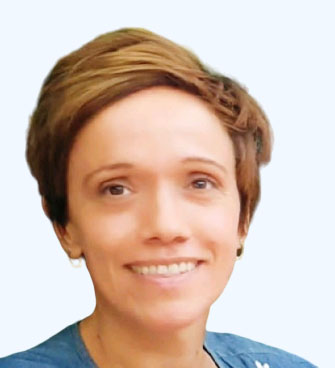By creating an integrated vertiport ecosystem, the EUREKA project is helping ensure an exciting future for innovative air mobility in Europe.
While there’s a lot of excitement about air taxis, the focus tends to be on the vertical take-off and landing (VTOL) capable aircraft (VCA). But getting these vehicles off the ground first requires having both critical infrastructure like vertiports and relevant VCA traffic management procedures in place.
Enter the EUREKA project.

“Basically, if there are no vertiports, there is no take-off, no landing, no innovative air mobility,” says Iliyana Simeonova, EUREKA project manager at EUROCONTROL.
The SESAR JU-funded and EUROCONTROL-led project looks to make innovative air mobility (IAM) a reality by paving the way towards the safe and efficient integration of vertiports – defined areas that support the take-off and landing of VCA – into European airspace.
“Our goal is to integrate vertiports into the airspace and to extend the current ATM, air operations, and U-space regulatory framework specifically for vertiport stakeholders,” adds Simeonova, who is coordinating the project.
The project is developing tailored requirements for approach, departure, and en-route procedures to and from vertiports. It is also working on a comprehensive vertiport ecosystem by implementing and evaluating vertiport collaborative traffic and vertiport network flow, capacity, and operational management systems.
Building a vertiport ecosystem from the ground up
The challenge is achieving these goals requires that the project start from square one.
“Not only does Europe lack any historic experience in innovative air mobility operations in low level, urban airspace, there is also a limited amount of quality vertiport reference materials or software/hardware solutions available,” explains Simeonova.
Even if such experience and resources were available, there’s still the challenge of harmonising vertiports with legacy ATM and airport procedures.
These are big challenges for sure, but they are being addressed head on by the project thanks to its close collaboration with industry stakeholders, regulators, national authorities, and other U-space related projects.
Together, the project’s 35 partners are planning to deliver procedure and airspace design recommendations, validate a vertiport collaborative traffic management system, and build a vertiport network manager capable of coordinating traffic at the local network level.
The project is also working to develop a new U-space service for managing any disruptions and emergencies happening in the immediate vicinity of the vertiport, such as those caused by disruptive drones or crewed aircraft experiencing a critical failure for performance. When such an event is detected, the service will initiate tactical changes to the U-space airspace configuration and create robust procedures for safely handling – and resolving – the issue.
A pioneer in vertiport solutions
According to Simeonova, these innovations will help create a scalable vertiport ecosystem that ensures safety and efficiency and promotes adaptability to different operating environments and timeframes.
“We are particularly proud of EUREKA's pioneering role in developing solutions for vertiports, as it is the first SESAR project working to extend the current scope of the existing ATM, air operations, and U-space regulatory framework for vertiport stakeholders,” she says.
Looking ahead, Simeonova says the project will provide policymakers and regulators with recommendations for establishing uniform safety standards and operational procedures for vertiports. As the project continues to advance the technology readiness level of its various solutions, it will also launch validation exercises, including flight tests.
“By creating a safe, efficient, and scalable vertiport ecosystem and integrating that system and its crewed and uncrewed users into traditional airspace, EUREKA is laying the foundation from which we can build an exciting future for innovative air mobility in Europe,” concludes Simeonova.

